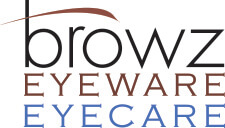
We love kids at Browz Eyeware & Eyecare! Our team of friendly, experienced optometrists will examine your child’s eyes and vision, and we’ll fit them with comfortable eyewear for crystal-clear vision. With years of experience treating kids, we have a patient and gentle approach, and we’ll ensure that your child has a pleasant experience in our Calgary, Alberta, offices.
Myopia is one of the most common diagnoses that we make during a pediatric eye exam with vision testing. Read on for more info about this vision condition:
What is myopia?
Myopia is the official medical term for common nearsightedness, in which people can see objects that are close but everything far away appears blurry. Kids with myopia may have trouble seeing the whiteboard at the front of the classroom or the TV screen on the other side of the den.
Eyeballs vary in shape, and myopia occurs as a result of either an elongated eyeball (slightly longer than normal from back to front) or a cornea that is too curved. Therefore, when light enters the eye it isn’t focused properly on the retina. Instead, light focuses in front of the retina and objects at a distance appear unclear.
Which kids are at risk for nearsightedness?
Myopia is typically diagnosed during a child’s school years. As the eye grows throughout childhood, myopia usually grows and worsens too – until approximately 20 years of age when the eyes stabilize.
Affecting close to 30 percent of the population in the U.S., progressive myopia is generally inherited. However, the rate of its progression appears to be influenced heavily by how kids use their eyes. Avid bookworms, children who spend extensive time in front of a computer, or kids who do any detailed visual work for long periods of time, may all be at a higher risk for nearsightedness. Although it’s not clear-cut, some scientific research has shown that these activities cause “focusing fatigue”, which raises kids’ chances of myopia.
What are the warning signs that your child may have myopia?
Kids with nearsightedness tend not to complain when they can’t see clearly. Yet they will try to move closer to view objects and read print. If you notice that your child is always relocating closer to see distant signs or see the TV screen, call to reserve an appointment for a pediatric eye exam with an eye doctor at Browz Eyeware & Eyecare.
When should you bring your child for a routine eye exam in Calgary to test for myopia?
Even if you don’t notice any warning signs of myopia in your child, routine eye exams are recommended. The link between learning and eyesight is strong, and an undetected vision condition may compromise your kid’s cognitive development and success in school. It’s advised to bring your child for the first eye exam at 6 months, then at 3 years and again before entering first grade.
How is myopia treated in kids?
In general, children with nearsightedness are fitted with eyeglasses to correct their vision. If your kid is mature enough, contact lenses may also be an option – although most eye experts don’t advise contacts until the teenage years, when kids can care for them properly. Our eye doctors will be pleased to meet with you and your child in our Calgary, Alberta, offices to discuss the most suitable vision correction, either eyeglasses or contacts.
Is there a way to prevent kids’ myopia?
As myopia is usually genetic, it’s not possible to prevent it completely. Yet there are some helpful actions you can take to minimize the impact of nearsightedness. The most important step is to ensure that you bring your child for regular eye exams, starting from a young age – especially if there is a family history of myopia or other eye problems.
Can progressive nearsightedness be slowed down?
Myopia control is a controversial topic amongst eye professionals. At present, there are no interventions that can totally halt the progression of myopia, yet there are a few treatments that appear to slow it down. Still under research and debate, here’s a basic explanation of the cutting-edge methods for myopia control that may be used with kids:

Eye Disease Management
Ortho-k, gas-permeable (GP) contact lenses
Ortho-k lenses are specially designed to reshape the cornea temporarily. Worn overnight while sleeping, ortho-k lenses allow people to achieve sharp vision during the daytime without need for eyeglasses or lenses. As they reshape the eyeball’s surface, ortho-k lenses have also been shown to be very effective at slowing the growth of kids’ eyes and reducing the lengthening process of their eyeballs. This reduces existing myopia and slows (or eventually stops) its progression. Most studies demonstrate that ortho-k lenses slow nearsightedness progression by a bit less than 50%.
Atropine eye drops
Atropine eye drops are a topical pharmaceutical agent being studied for use as a way to retard growth of the eye. Although atropine is regarded by scientific research as the most efficient means of myopia control, there are many undesirable side effects – such as glare, pupil dilation and loss of accommodation/focusing ability. While the current studies show promise, these drops are not yet FDA-approved for use as myopia control, and the optimal dose to prescribe is still under scrutiny by medical eye professionals.
Bifocal contact lenses
Bifocal and multifocal soft contact lenses are another option being investigated for use in myopia control. One study showed a significant reduction of nearsightedness and eye elongation in children aged 11 – 14, when bifocal lenses were worn for 10 months. Yet more research needs to be done on how to determine the ideal refractive power that needs to be worn.
More outdoor playtime
“Go outside!” may be two of the most effective words of wisdom that parents can tell children to help with their eyesight. Many recent studies have shown that when kids spend more time outdoors, the brakes are put on the speed of myopia progression in children!

